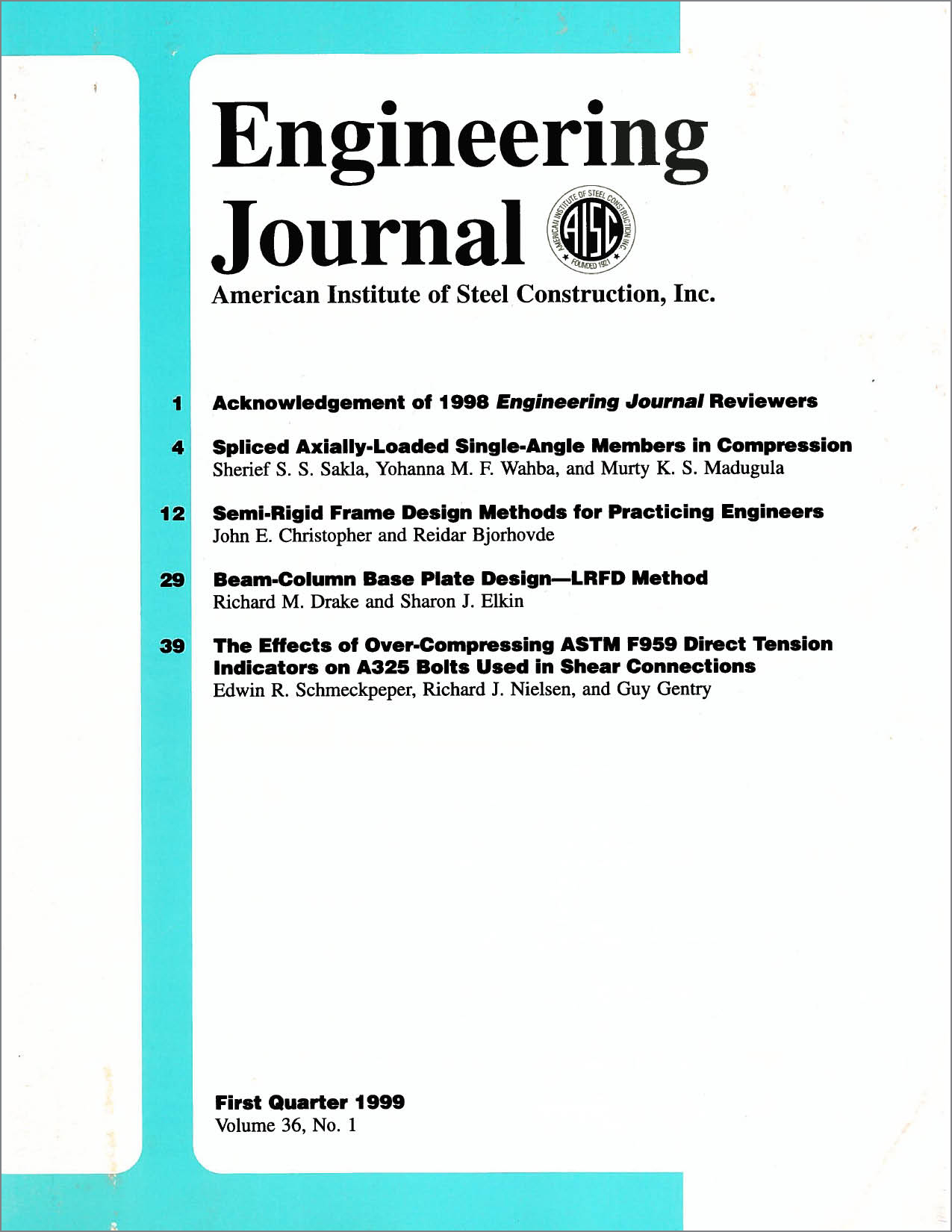Semi-Rigid Frame Design Methods for Practicing Engineers
DOI:
https://doi.org/10.62913/engj.v36i1.715Abstract
Design of semi-rigid (PR) frames focuses on behavior characteristics of non-linear connections, including their substantially different loading and unloading characteristics. Moment-rotation connection representations, such as the three-parameter power model, facilitate the calculation of stiffness data required for frame analysis. In this paper, the connection characteristics are described in terms of linearized connection stiffnesses that are calculated on the basis of expected connection loads. This allows for the use of first-order analysis to determine structural stability, serviceability and member load effects. The design method detailed in this paper includes the concurrent selection of connection and member sizes. The LRFD approach of AISC is utilized, including the provisions that rely on amplification factors to account the provisions that rely on amplification factors to account for second-order effects. Member section checks are made with unbraced length K-factors determined from the alignment charts, using modified relative distribution factors to account for connection deformation

